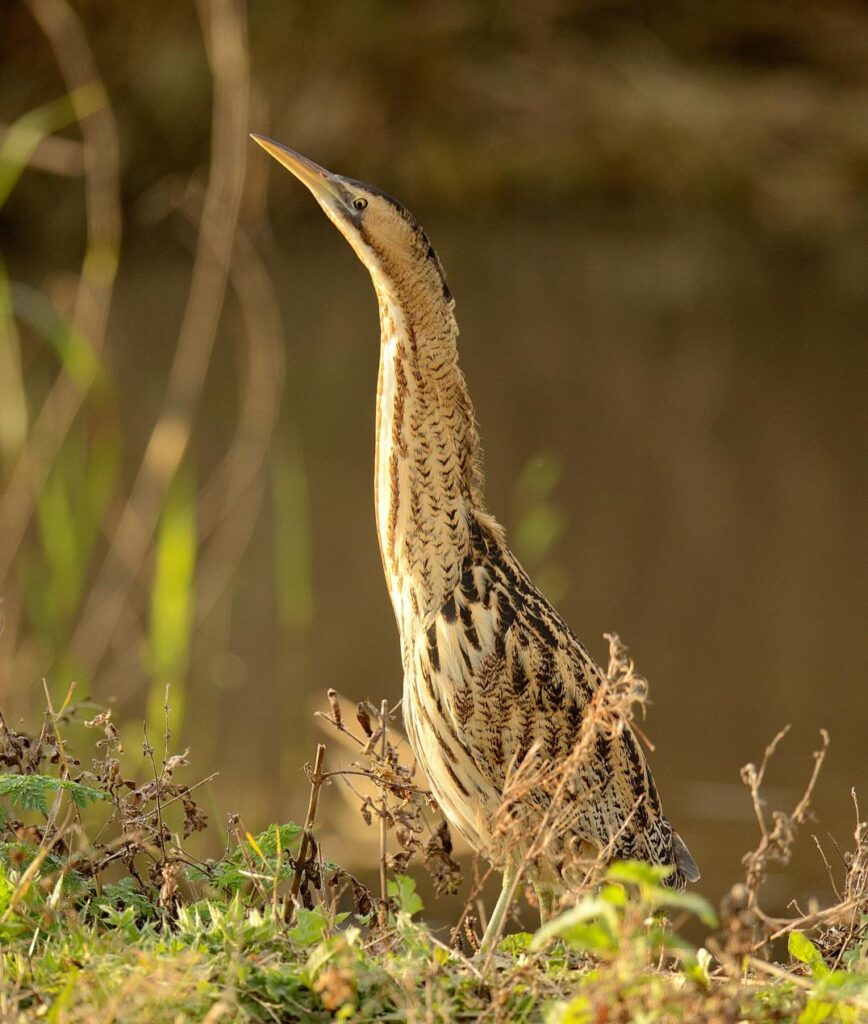WWT London Wetland Centre celebrates 21 years of sightings of the rare and secretive bittern

Shout out for 21 years of Britain’s loudest bird
WWT London Wetland Centre celebrates 21 years of sightings of the rare and secretive bittern
Famously Britain’s loudest bird, the male bittern’s booming call rivals that of a jet engine. But, despite its volume, this cleverly camouflaged bird, wading cautiously among dense reeds, is incredibly difficult to spot.
Requiring large, undisturbed reedbeds to hunt and breed, London Wetland Centre is the only place it can be regularly seen in the London area during winter.
Senior Reserve Warden, Angus Wilkinson, said: “The bittern is such a special sight in the UK and we’re thrilled that London Wetland Centre has been able to offer this species a wintering ground haven for more than two decades.”
These beautiful, shy birds were pushed to the brink of extinction in Victorian times when their reedbed homes were drained for reservoirs.
Reserve Manager, Adam Salmon said: “When London Wetland Centre opened in 2000 there were only 30 known breeding pairs in the UK. Now, thanks to conservation efforts, there are well over 200 breeding pairs. With its numbers steadily rising, the bittern is a true flagship species for wetland conservation – proving that if we work to protect and restore precious habitats we can turn the tide on extinction.”
“Not only this, but by protecting habitats like reedbeds and peat bogs we unlock the carbon sinking super powers that these wetlands hold – one of the planet’s biggest weapons in the battle against climate change.”
“Our booming bitterns winter here at London Wetland Centre from around October until March, so come down and spot a true wetland wonder today!”
If that wasn’t enough, the Centre is also looking forward to welcoming some new feathered friends this December.
Three common white storks will be moving into ‘Wetlands of the World’, an exhibit that invites visitors to explore the magic of different wetlands and the threatened species that rely on them.
Despite their name, these storks are rare across Europe with only a handful of sightings in the UK over the last 25 years.
John Arbon, Living Collections Manager, said: “With changing farming practises and modern city construction, these once ‘common’ storks have all but disappeared with only around 20 spotted in England every year.”
“The sight of their large, twig-ladened nests on roof tops and chimneys was once a common feature in our town and cityscapes.”
“In fact these famous, red-beaked, long-legged birds are so embedded into our landscapes that they play a role in our historic mythology, with images of them delivering babies still used in cards today.”
“It’s essential to realise that if we allow wetland habitats to continue to be destroyed here in the UK, we will lose our iconic wildlife for good.”
“Having species like the white stork here at the Centre reminds us of what we stand to lose if we don’t act now and stand up for the protection of precious habitats.”
But there is hope in the future, the Centre’s newest birds could form part of a breeding programme for the species, seeking to build numbers.
The new arrivals will be on view to visitors from Friday 15 December. See magnificent white storks, glimpse illusive bitterns, say hello to playful otters and so much more… book your visit to London Wetland Centre today at wwt.org.uk/London Every visit supports WWT’s wetland saving work here in the UK and around the world.
*Adult ticket prices are £15.40 without donation, £17.00 including donation. Junior ticket
prices are £10 without donation, £11.00 with donation. Under 4s always go free.




